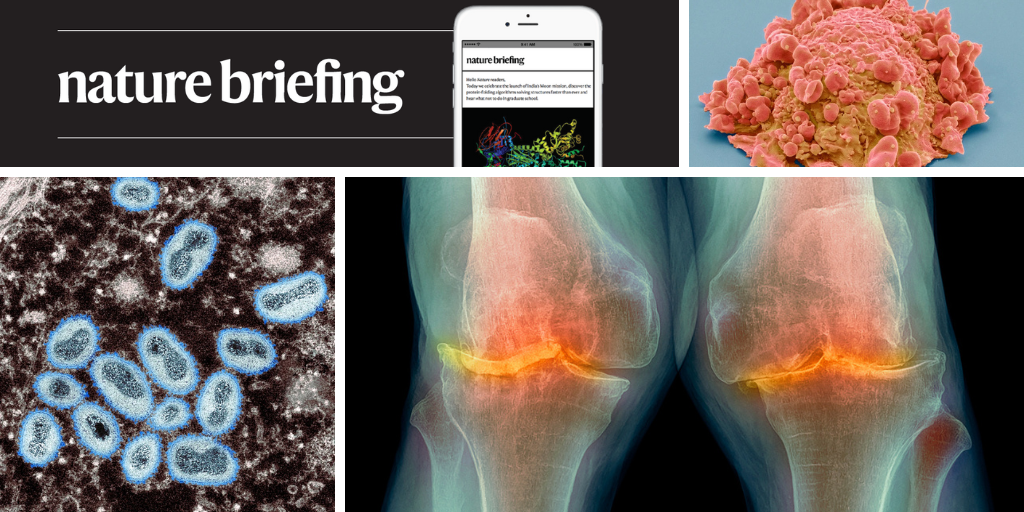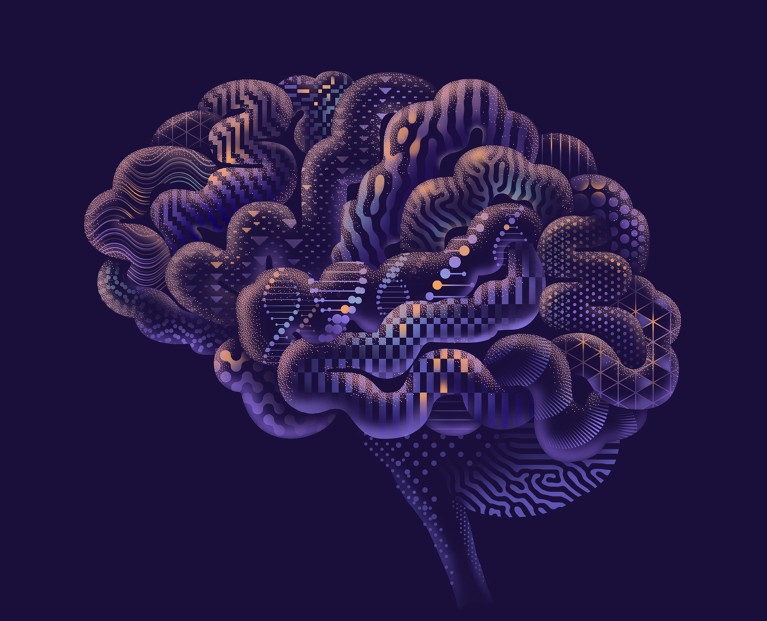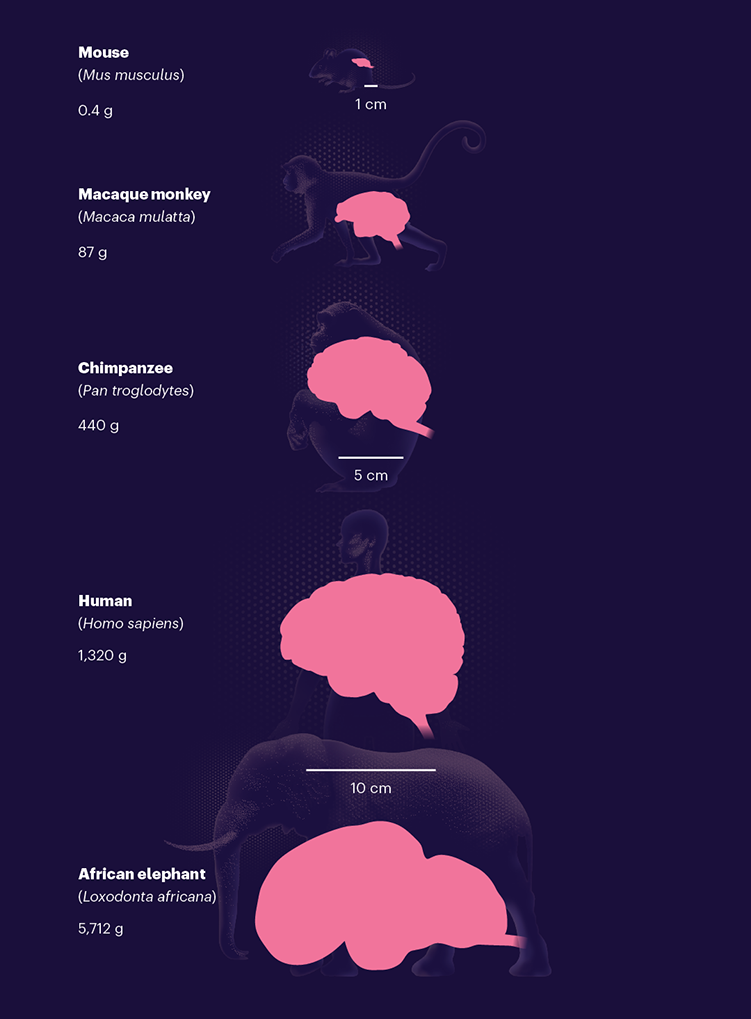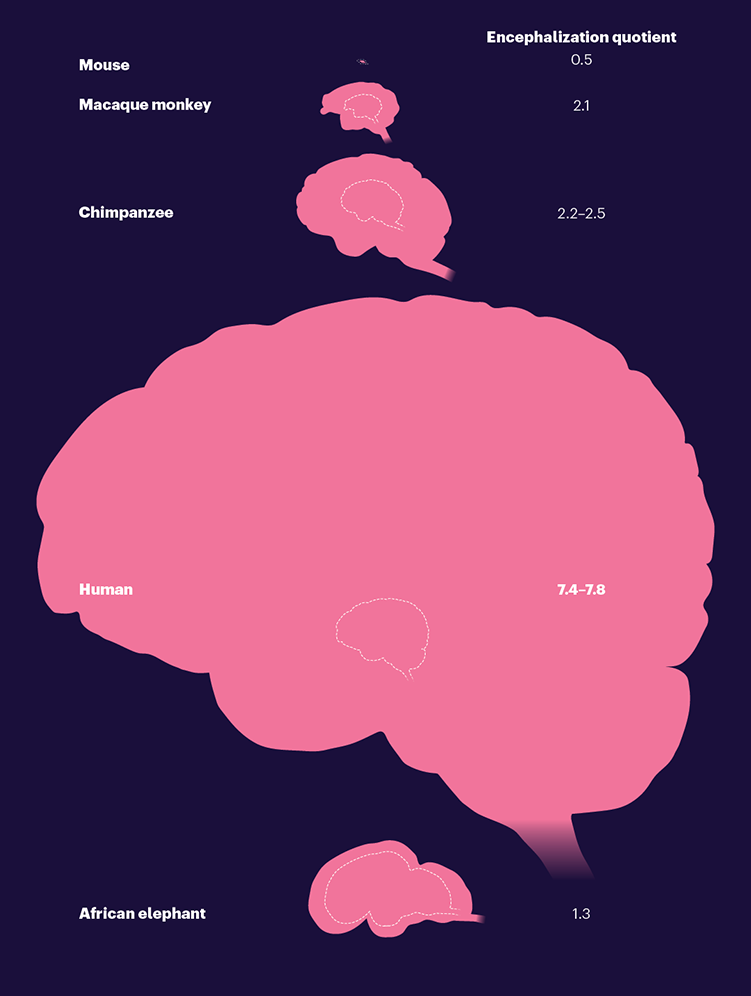Hello Nature readers, would you like to get this Briefing in your inbox free every day? Sign up here.
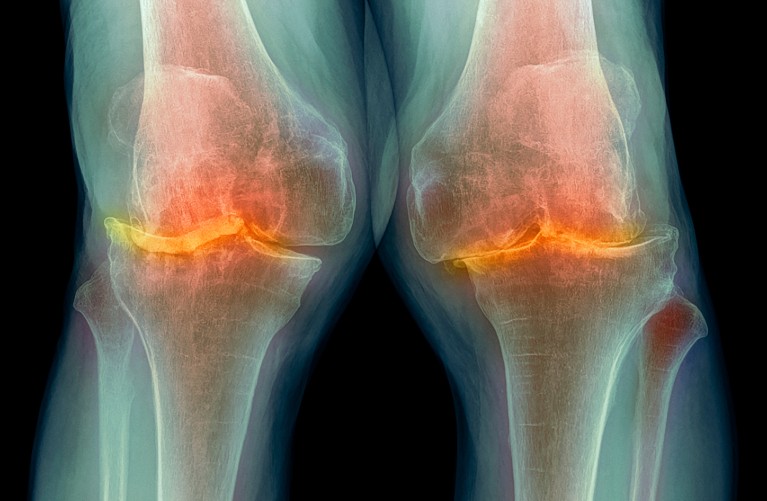
Osteoarthritis, which causes stiff and painful joints, affects the knees most often.Credit: Dr. P. Marazzi/Science Photo Library
A blockbuster weight-loss drug sharply reduces pain from obesity-related knee arthritis and improves a person’s ability to engage in activities such as climbing stairs. A clinical trial of 400 participants across five continents showed that semaglutide, a drug sold as Wegovy for treating obesity, provided pain relief on a par with opioid drugs. At the end of the trial, many participants’ pain had subsided enough that they were no longer eligible for the study, says rheumatologist Henning Bliddal. “They got a therapy that was so effective that they more or less were treated out of the study,” he says.
Reference: New England Journal of Medicine
Detailed maps that pinpoint the positions of cells in tumours and probe the tumours’ biology are offering insights into the development of several cancers, and could provide leads for potential treatments. Researchers from the Human Tumor Atlas Network analysed hundreds of thousands of cells from human and animal tissues. Their results describe extremely detailed 3D maps of tumour cells and trace the cellular changes that lead to cancer with ‘molecular clocks’. The clocks reveal other factors, beyond just size, that could help to evaluate the risk of pre-cancerous growths.
Reference: Package of twelve papers in Nature journals — start with this beautifully illustrated introductory page.
A reaction between the amino acid cysteine with short-chain carbon molecules forms small, two-tailed lipids that spontaneously arrange themselves into a membrane-like sphere. Researchers suggest these ‘protocell’ spheres could mimic an early stage of cell membrane evolution. The membranes of our cells are made of large lipids with two tails, called phospholipids. But these phospholipids were probably scarce on Earth before life began. The earliest cells might therefore have relied on smaller lipids, like the ones formed in this reaction.
Reference: Nature Chemistry paper
Genomic analysis shows that a strain of the virus that causes mpox appears to be spreading from person to person in an outbreak in Kinshasa, the capital of the Democratic Republic of the Congo. Previously, the variant, called clade Ia, was known to transmit predominantly from animals to humans in Central Africa. The pathogen spreading between humans, possibly through sexual contact, could further complicate efforts to halt transmission of the disease in the region. “We don’t know how far these adaptations can go, and we are gathering data to understand how this evolution is occurring,” says Placide Mbala, head of epidemiology and global health at Kinshasa’s National Institute of Biomedical Research.
Reference: Preliminary results posted on Virological (not peer reviewed)
Features & opinion
Today marks Halloween, the celebration of all things spooky. As children take to the streets dressed in their best ghoulish costumes, Nature asked nine scientists who study unusual animals and plants what drew them to their favourite — often misunderstood — subjects, from the common raven (Corvus corax) to the corpse plant (Amorphophallus titanum).
Today I’m giggling at the celestial ‘googly eye’ caught by NASA’s Perseverance rover. Phobos, one of Mars’s moons, cast a silhouette as it passed in front of the Sun, briefly turning its orange surface into an iris, with Phobos as a pupil.
Let me know what I should be keeping an eye on at [email protected].
Thanks for reading,
Jacob Smith, associate editor, Nature Briefing
Want more? Sign up to our other free Nature Briefing newsletters:
• Nature Briefing: Careers — insights, advice and award-winning journalism to help you optimize your working life
• Nature Briefing: Microbiology — the most abundant living entities on our planet — microorganisms — and the role they play in health, the environment and food systems
• Nature Briefing: Anthropocene — climate change, biodiversity, sustainability and geoengineering
• Nature Briefing: AI & Robotics — 100% written by humans, of course
• Nature Briefing: Cancer — a weekly newsletter written with cancer researchers in mind
• Nature Briefing: Translational Research — covers biotechnology, drug discovery and pharma


